First published in Range magazine, Summer 2018 issue. SEE Also The Laws of Prior Appropriation & Beneficial Use — Realities that Nobody Wants to Talk About.
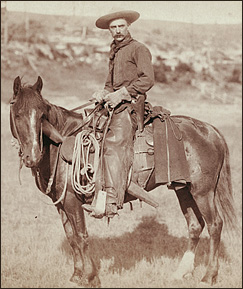 Divisions and factions in the western ranching industry are nothing new. According to some historical accounts, farmers and ranchers have never been friends, and to a large extent the same goes for cowmen and sheepmen. Over the course of the last several years, yet another rift has developed, that may even pit ranchers against their state and local governments. Like previous disagreements, this rift is based on property rights and the definition of “property.”
Divisions and factions in the western ranching industry are nothing new. According to some historical accounts, farmers and ranchers have never been friends, and to a large extent the same goes for cowmen and sheepmen. Over the course of the last several years, yet another rift has developed, that may even pit ranchers against their state and local governments. Like previous disagreements, this rift is based on property rights and the definition of “property.”
One of the biggest challenges with ranching in the arid West is that it is virtually impossible to own enough private property to have an economically viable ranching operation to support a family entirely on private land. With the exception of irrigated land, the amount of forage produced on most dry range in the West is often marginal, so it requires a lot of land to graze a herd of cows or sheep big enough to make a viable living. Consequently, many ranchers in the West are dependent upon the forage and water produced on the so-called “public domain.” Although federal or state governments control these lands, do ranchers have legitimate protected property interests in the surface rights for the forage and water?
 How Property Rights Are Created
How Property Rights Are Created
At the end of World War I when Lawrence Esplin (my wife, Heidi Esplin Macfarlane’s grandfather), returned from military service in France, he took up a 640-acre homestead under the Stock-raising Homestead Act of 1916. In his efforts to support his growing family and succeed as a sheep rancher, he had to utilize the forage and water on the surrounding open range to graze his livestock.
In the 1920s and ’30s, my own maternal great-grandmother, Laura Wood Jenson, worked as an alpine milkmaid in summertime, tending her small herd of cows in mountain meadows on open ranges in southern Utah, making cheese and butter from their milk and cream. While Grandma Jenson was tending her mountain dairy, Grandpa Heber Jenson was harvesting timber on the same open range, which he sawed into lumber in the primitive sawmill that he moved back and forth between Mammoth Creek and nearby Tommy Creek.
During that same time frame, my paternal grandmother, LaRue Quayle Macfarlane, became a registered nurse and worked 40 years in the same southern Utah community, much of that time with a rural country doctor who did house calls. But what does that have to do with this discussion of property rights, including timber and especially grazing rights? Let me illustrate.
The Stock-Raising Homestead Act of 1916 had been passed just five years earlier. Although the homestead acts (including the original 1862 Homestead Act) essentially codified natural law—first in time, first in right; possession is 9/10ths of the law; and use it or lose it—like many settlers, homesteaders, and pioneers since the dawn of time, my teenage grandmother ventured into that wilderness and put her time, energy and resources at risk to claim and tame raw land, possessing, improving, and putting it to productive, beneficial use. In the process it became hers. She acquired property rights to the land and water, and grazing rights to the forage on the adjoining lands that her livestock utilized. These were bona fide property rights that she exchanged for value to finance her education.
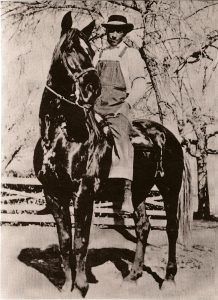 And these were exactly the same kinds of grazing and timber rights that Grandpa and Grandma Jenson, and Grandpa Esplin acquired the same way—utilizing forage, water and timber on the public domain, and later converting to sheep grazing allotments. In private sector enterprise, their property interests in the grazing and timber rights were recognized as sufficient to be bought and sold for money, as well as for banks to recognize and accept as collateral for loans.
And these were exactly the same kinds of grazing and timber rights that Grandpa and Grandma Jenson, and Grandpa Esplin acquired the same way—utilizing forage, water and timber on the public domain, and later converting to sheep grazing allotments. In private sector enterprise, their property interests in the grazing and timber rights were recognized as sufficient to be bought and sold for money, as well as for banks to recognize and accept as collateral for loans.
To be clear, regardless of congressional acts, our grandparents were simply doing what settlers, homesteaders and pioneers had done since the dawn of civilization to acquire property rights: claim it, tame it, and put it to productive beneficial use. Such property rights were not created by any law of man; they existed naturally from the outset. In the language of the Declaration of Independence, these natural rights were referred to as basic, fundamental, inalienable rights naturally endowed by the Creator, under the laws of nature and of nature’s God.
Since it makes so much sense, what’s the problem? The problem is our society has evolved to the point that it is no longer inclined to recognize such property interests as unalienable, fundamental rights.
Why?
In the aftermath of the Bundy trials, there remain important loose ends and unfinished business regarding this issue that are essentially identical to those that followed the Federalist/Anti-Federalist Debate and ratification of the U.S. Constitution in 1787 and 1788. Until these issues are fully addressed and resolved, that same unfinished business will continue to haunt generations to come. [Check “Tyranny” group at www.rangemagazine.com]
The Underlying Constitutional Issue & Principles of Natural Law
Although some constitutional purists will recoil at the thought, the reality is that one of the root causes of the controversy we currently face regarding protection of private property rights and interests stems from vague and ambiguous definitions of property rights, as well as inadequate protection of property and property interests in our founding documents, including our state constitutions.
How and why did that happen, especially when the writings of the Founding Fathers and those who influenced their thinking displayed no misunderstanding or lack of passion for the protection of property interests at the time?
Heavily influenced by philosophers such as John Locke, Thomas Paine, Alexis de Tocqueville, Edmund Burke, and Adam Smith, all the Founding Fathers were strong believers in property rights and the protection of private property interests.
According to Locke’s view, private property existed under natural law long before the establishment of any political authority. He saw the rights of property owners as a bulwark of liberty. Legitimate government was grounded on a compact between the people and their rulers, who governed by consent of the governed.
Before becoming our second president, John Adams said, “Property must be secured or liberty cannot exist.” And, “An economic system grounded on respect for private ownership tends to diffuse power and to strengthen individual autonomy from government.”
According to William Paterson, a leading delegate to the Constitutional Convention who was later appointed justice to the U.S Supreme Court: “The right of acquiring and possessing property, and having it protected, is one of the natural, inherent, and unalienable rights of man…. The preservation of property then is the primary object of the social compact.”
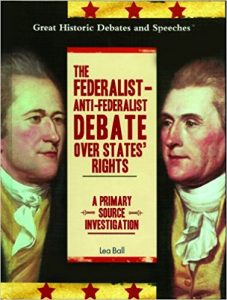 The Federalist/Anti-Federalist Debate
The Federalist/Anti-Federalist Debate
As noted by Carol M. Rose, former law professor at Yale Law School: “This issue spilled into the great American constitutional debates of the late 1780s, where the Anti-Federalists complained that the Federalist plans were part of a monarchic scheme, aimed at empire and mightiness instead of freedom.”
After a lengthy and heated four-month process, a draft of the U.S. Constitution was finally approved by the Constitutional Convention on Sept. 17, 1787. From the time it was signed by the delegates to the time it was ratified by the final state of Rhode Island in 1790, however, a fierce national debate—the Federalist/Anti-Federalist Debate—raged in the states regarding the proposed constitution and the new government it intended to create. This debate occurred in meeting halls, on streets, and on the printed page.
Although the Anti-Federalists had a number of concerns, their single biggest one was that the powerful new federal layer of government that had been created would ultimately devolve into tyranny. Consequently, they were adamant about the need for a Bill of Rights to help protect fundamental individual, inalienable rights against the kinds of government infringements they had experienced.
A majority of the Federalists, on the other hand, opposed any kind of Bill of Rights. Among other things, they argued that any such enumeration, once written down explicitly, could later be interpreted as a list of the only rights the people had. In response to this assertion, in so-called Anti-Federalist No. 84, “Brutus” argued that government unrestrained by such a bill could easily devolve into tyranny. Other supporters of the bill argued that a list of rights would not and should not be interpreted as exhaustive—that these rights were merely examples of important natural rights bestowed by their Creator—but that other such natural rights existed as well, whether they were enumerated or not. People from this school of thought were confident that the judiciary would interpret these rights in an expansive fashion. Unfortunately, they were wrong.
In a compromised effort to secure ratification, James Madison, a prominent Federalist, and long considered to be the “father of the constitution,” took the first stab at framing the first 10 amendments that became the Bill of Rights. In his first draft he proposed including a broad theoretical declaration about the purpose of government, stating, “That government is instituted, and ought to be exercised for the benefit of the people; which consists in the enjoyment of life and liberty, with the right of acquiring and using property, and generally of pursuing and obtaining happiness and safety.” Although Congress did not adopt this wording, it underscored even Madison’s commitment to private property as a bedrock of the new national government.
Although the concept of private property was fundamental to the entire scheme of things, it was also a thorny issue because the practical, working definition of “Property” at the time included, among other things, SLAVES. In an effort to gloss over that ugly fact, some important things were left unwritten. It is fair to say that, to the Founding Fathers, the concept of private property and property rights was so intrinsic and fundamental to their belief system that in declining to explicitly address the subject they made certain assumptions, and didn’t see the need to provide more explicit detail and protection for the inherent, inalienable property rights. It is also fair to say that it is those unstated assumptions, and attendant vagueness and ambiguity, that exacerbate the loose ends and unfinished business that continue to threaten the concept of fundamental, unalienable property rights.
The Watered-down Modern Concept of Protected Property Interests
Fast-forward to 2018. Multiple federal courts, including the U.S. Supreme Court, have now repeatedly noted that property, property rights, and property interests are not defined in the U.S. Constitution, and those courts have repeatedly held that nothing in the U.S. Constitution creates or defines such property rights or interests.
In Board of Regents v. Roth, 408 U.S. 564 (1972), the U.S. Supreme Court noted that although property interests protected by due process may “extend well beyond actual ownership of real estate, chattels, or money,” such protected property interests are not defined or created by the Constitution. “Rather, they are created and their dimensions are defined by existing rules or understandings that stem from an independent source such as state law—rules or understandings that secure certain benefits and that support claims of entitlement to those benefits.”
In the case of western ranchers, for example, this would be the claim of entitlement to the benefit or beneficial use of forage and water on federal lands, based on prior beneficial use. The Roth court noted: “To have a property interest in a benefit, a person clearly must have more than an abstract need or desire for it. He must have more than a unilateral expectation of it. He must, instead, have a legitimate claim of entitlement to it. It is a purpose of the ancient institution of property to protect those claims upon which people rely in their daily lives, reliance that must not be arbitrarily undermined.”
Relying on the Roth case, the 10th U.S. Circuit Court of Appeals observed: “What constitutes a property interest within the meaning of the Fourteenth Amendment is not always easy to determine…. ‘Liberty’ and ‘property’ are broad and majestic terms…[that] relate to the whole domain of social and economic fact.”
Now this is where the discussion really gets interesting. As the Roth court noted, “Certain attributes of ‘property’ interests protected by due process emerge from these [various] decisions.” The primary criterion that federal courts have now come to focus on determining whether or not a property interest exists sufficient to require due process protection boils down to an analysis of applicable state and local law, and the amount of discretion those statutes, ordinances and regulations grant to governmental decision makers in regulating and administering the purported property interests involved. How is that for a practical, useful working standard?
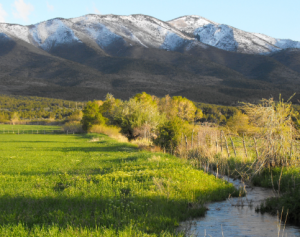 Defining “Property”
Defining “Property”
Based on these criteria and while applying state law in a variety of situations, federal and state appellate courts across the country have upheld protected property interests that exist in a myriad of “rights” well beyond the stereotypical concept of real property interests. It has been recognized that protected property interests can take a variety of forms, with little, if any uniformity.
But thanks to the lack of clear definition and discussion of property interests in the U.S. Constitution, over the last 200-plus years, federal courts have failed to establish a clear, practical or useful definition or practical formula for analysis of protected property interests. Consequently, federal courts’ approach to property interests resembles the approach taken by U.S. Supreme Court Justice Potter Stewart with respect to obscenity and hard-core pornography. In holding that the Constitution protected all obscenity except “hard-core pornography,” in a concurring opinion in Jacobellis v. Ohio, 378 U.s 184, 197(1964), Justice Stewart famously wrote: “I shall not today attempt further to define the kinds of [hard-core pornographic] material I understand to be embraced within that shorthand description, and perhaps I could never succeed in intelligibly doing so. But I know it when I see it, and the motion picture involved in this case is not that.”
Based on these criteria and while applying state law in a variety of situations, federal and state appellate courts across the country have upheld protected property interests that exist in a myriad of “rights” well beyond the stereotypical concept of real property interests. It has been recognized that protected property interests can take a variety of forms, with little, if any uniformity.
But thanks to the lack of clear definition and discussion of property interests in the U.S. Constitution, over the last 200-plus years, federal courts have failed to establish a clear, practical or useful definition or practical formula for analysis of protected property interests. Consequently, federal courts’ approach to property interests resembles the approach taken by U.S. Supreme Court Justice Potter Stewart with respect to obscenity and hard-core pornography. In holding that the Constitution protected all obscenity except “hard-core pornography,” in a concurring opinion in Jacobellis v. Ohio, 378 U.s 184, 197(1964), Justice Stewart famously wrote: “I shall not today attempt further to define the kinds of [hard-core pornographic] material I understand to be embraced within that shorthand description, and perhaps I could never succeed in intelligibly doing so. But I know it when I see it, and the motion picture involved in this case is not that.”
Federal courts have seemingly taken a similar approach to the concept of property and “protected property interests.” They have made no real attempt to define it, but have said that they will simply recognize it when they see it, based on the quirky criteria they have developed. In the process they have found protected property interests in a myriad of surprising places and concepts. But their apparent litmus test has nothing to do with fundamental conventional property principles. Substantive and procedural governmental discretion has now become the tail that wags the dog in property rights’ analyses.
Just as in addressing pornography, in terms of coming up with a practical useful definition of property, the federal courts have failed miserably. Can you imagine what might have been considered obscene or pornographic in 1780, compared to today?
If protected property interests are created by applicable state law, wouldn’t it make more sense to address property issues in state courts?
Standards that apply to infringement of unalienable fundamental rights are supposed to be timeless. The central concept of fundamental, inalienable rights is that they are not subject to societal whims, including popular majority opinion. In other words, although a rancher and/or his/her predecessors (such as our western pioneer grandparents) may have ventured into the raw wilderness and under the laws of nature (first in right, first in time; possession; use it or lose it, etc., as codified under the various homestead acts) appropriated land for their homesteads and forage and water for their livestock, if some governmental or regulatory body is given fluctuating discretion to simply disregard such fundamental rights and principles, then where does that leave us?
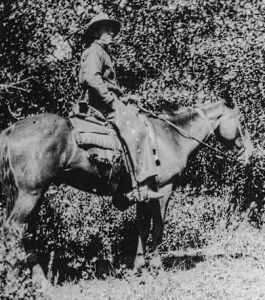 Why It Matters
Why It Matters
The current rift over property rights is really nothing more than a continuation of the unfinished Federalist/Anti-federalist Debate and the long-standing failure to adequately define and protect property rights. According to one western rancher, “There are only two kinds of ranchers: those who kiss the government’s ass, and those who tell the government to ‘kiss my ass.’” But the core question boils down to recognition of property rights.
Over the course of the past six years, there has been a big movement among western states to transfer federal lands to state control. Nevertheless, shifting jurisdictional power from the federal to local governments does not necessarily resolve the issue of fundamental property rights. Fundamental property rights should not be infringed upon regardless of which entity has jurisdiction. Unfortunately, state and local governments do not necessarily have any better track record for recognizing and advocating for the protection of private property interests than does the federal government.
Although it may ebb and flow, the 200+ year debate over this important issue—what constitutes protected property interests—does not appear to be going away any time soon.
You may also like
-
Arizona rancher sues to stop million-acre national monument
-
VDH: How to Destroy the American Legal System
-
Protect The Harvest: The whole truth about Western ranching
-
Colorado conservation group sues wildlife officials for skirting NEPA to get wolves into the state
-
Polis adds another radical activist to Colorado Parks & Wildlife Commission

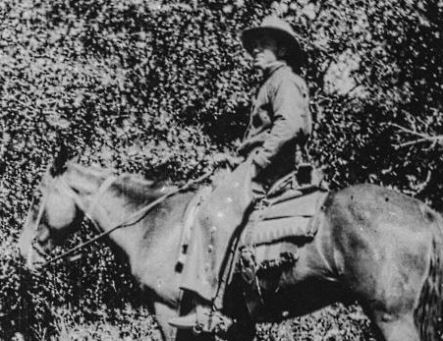
We lost our allotment in the mid 90’s because of the spotted owl, The allotment would run 640 Aus’ then 240 Aus” then a not so kind get off permit. Of the original deeded property we were fortunate to sell off enough to pay off our debts and retain 60 acres. Try to fathom the cut fences, opened gates, Burned barn, and animosity from the USFS.